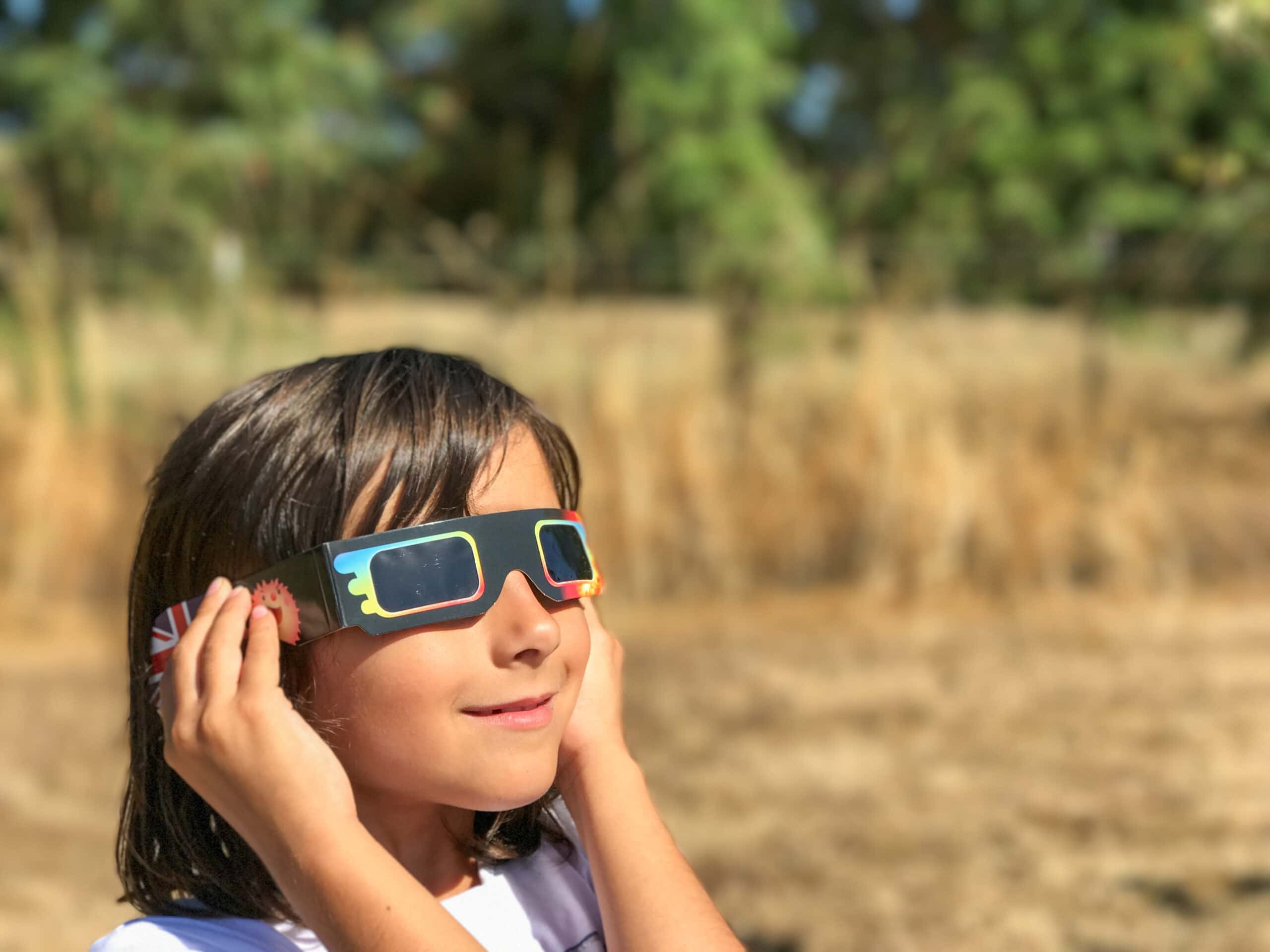UAMS Jones Eye Institute Advises Eye Protection for April Eclipse
| Proper eye protection is highly important when viewing an eclipse, said experts at the University of Arkansas for Medical Sciences’ (UAMS) Harvey & Bernice Jones Eye Institute.
On April 8, the continental United States will be treated to a total eclipse of the sun. This amazing phenomenon will be the first total eclipse to cross Arkansas since 1918. The path of totality, where the sun is completely covered by the moon, will last a little over two minutes in Little Rock and up to twice as long in the southwestern corner of the state.
“This amazing phenomenon is worth seeing, but you need proper eye protection to see it safely,” said Katie Brown, O.D., an optometrist with the Jones Eye Institute.
Sunlight can hurt the eyes in several ways. Focused sun rays can permanently damage the back of the eye, called the retina. This is called solar retinopathy. Another more painful condition, solar keratitis, can cause a sunburn to the cornea, which is the front of the eye.
Vision loss may present as a blind spot or black spot in a person’s vision, color loss or even distortion of their central vision, and these symptoms may not be noticed for several hours. Anyone who believes they have eye damage should see an optometrist or ophthalmologist immediately, Brown said.
It’s important to know how to view an eclipse safely — and what to avoid, she said.
“The safest way to look at the sun during an eclipse is to use eclipse glasses,” Brown said. “These are specially made and tested, and can fit over most glasses. Only wear eclipse glasses with ISO 12312-2 filters, and always keep them on while looking at the sun.”
Across the state, many local retailers sell eclipse glasses for as little as $1 or $2 a pair. Some libraries may offer them for free for members with library cards. The Jones Eye Institute will be handing out eclipse glasses starting the week before the April 8 event to the community.
An old pair of eclipse glasses is still safe to use so long as they use ISO 12312-2 filters and have no tears or holes in the dark solar filter, Brown said. Make sure the filter is still firmly attached.
Pinhole projectors, often a popular and easy school project, are also a safe way to view the eclipse indirectly. Using this method projects the eclipse onto a flat surface without the need for eclipse glasses. For instructions, visit jpl.nasa.gov/edu/learn.
“Pinhole projectors are a fun project to do with the kids at home and can make the eclipse a learning experience,” Brown said. “Remember not to look at the sun with a pinhole projector.”
For direct viewing, ISO 12312-2 eclipse glasses are a must. Do not use other methods to look at the sun, including 3D glasses, sunglasses, binoculars, telescopes, compact discs, space blankets, polyester balloons or food wrappers. Large, dark post-mydriatic glasses from an eye doctor following a dilated eye exam are also unsafe, Brown said.
“People tend to think that sunglasses are safe for eclipse viewing, but they’re not,” Brown said. “Their dark appearance, even with polarization, isn’t enough to protect against eye damage from looking directly at the sun.”
Another common question Brown said she and other eye experts receive leading up to an eclipse is whether farm animals and pets will be safe during an eclipse. Unlike humans, animals have no reason to look up at the sun, so they will be fine without protection, she said.
To get the most enjoyment from the April 8 eclipse, a little preparation goes a long way.
“Remember to protect your eyes and have fun,” Brown said. “Use this natural phenomenon as an opportunity to increase your understanding of the world around you.”
For more information on safely viewing an eclipse, visit the American Astronomical Society at eclipse.aas.org/eye-safety.
